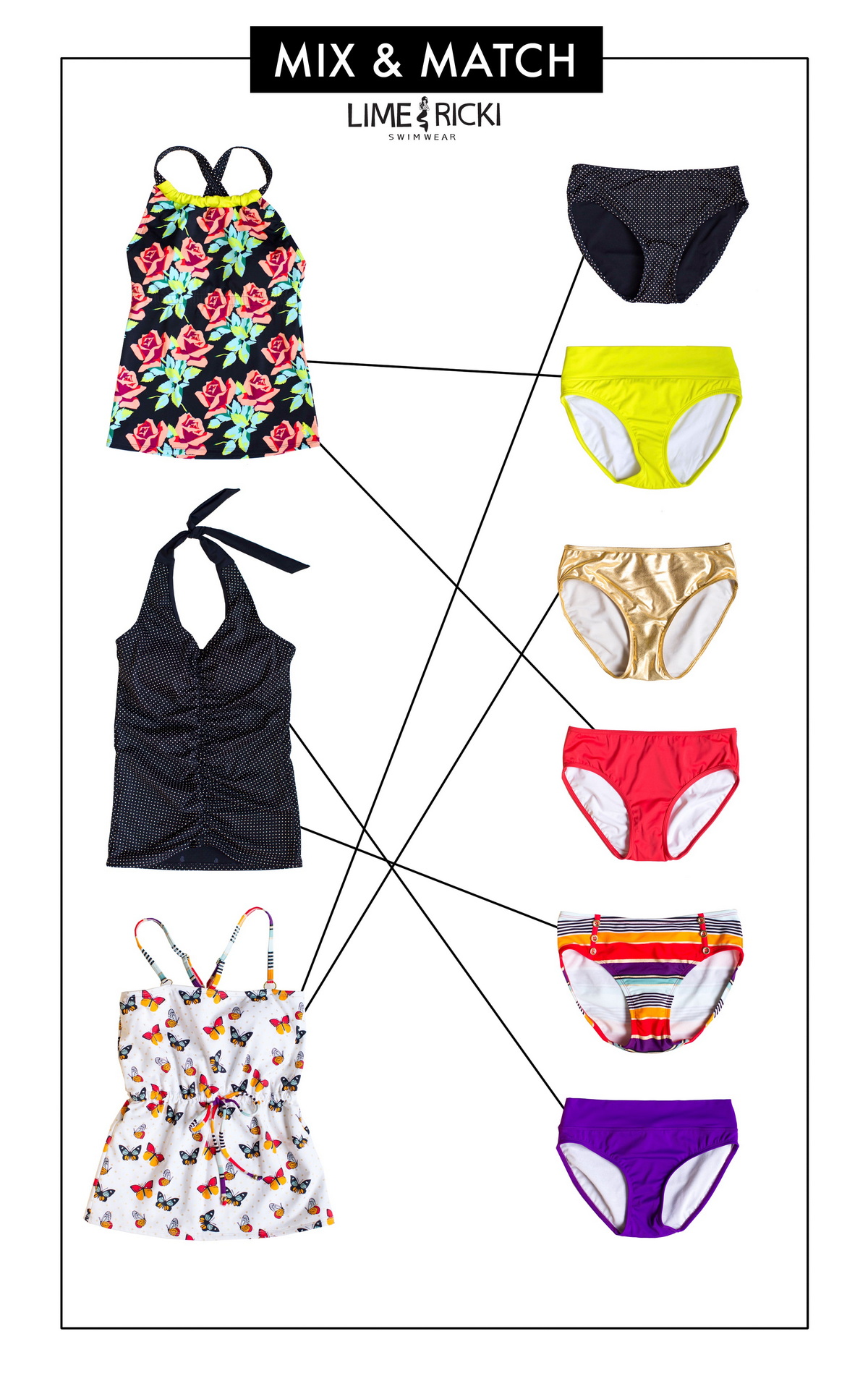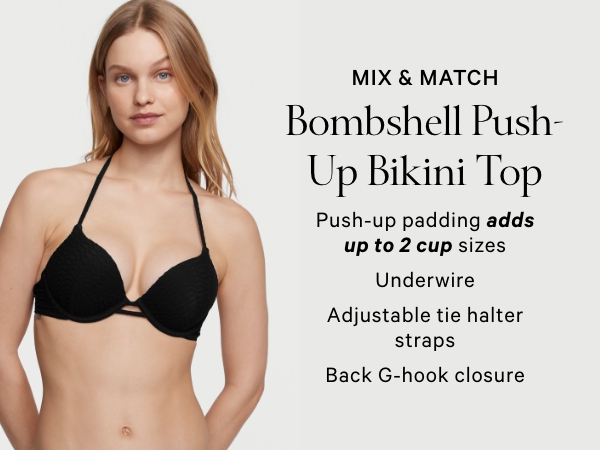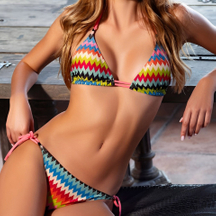Content Menu
● Why Mix and Match Swimwear?
● Understanding Your Body Type
● Choosing the Right Pieces
● Color Coordination Strategies
>> How to Mix and Match Swimwear Colors
● Mastering Pattern and Texture Mixing
● Choosing the Right Cuts and Coverage
● Building a Versatile Swimwear Collection
● Accessorizing Your Mix-and-Match Looks
● Mix and Match Swimwear for Different Occasions
● Tips for Mixing and Matching Swimwear
>> 1. Color Coordination
>> 2. Experiment with Patterns and Textures
>> 3. Stick to a Theme
>> 4. Consider Coverage Levels
>> 5. Accessorize Wisely
● Common Mistakes to Avoid
● Layering and Cover-Ups
● Confidence is Key
● Conclusion
● FAQs About Mixing and Matching Swimwear
● Citations:
How to Mix and Match Swimwear: The Ultimate Guide for Stylish Beach Looks
Mixing and matching swimwear is more than just a trend—it's a creative way to express your personal style, maximize your swimwear wardrobe, and ensure you always have a fresh look for the beach or pool. Whether you're a swimwear enthusiast or a brand looking to inspire your customers, mastering how to mix and match swimwear opens up endless possibilities for fashion-forward, confidence-boosting outfits. In this comprehensive guide, you'll learn everything from color coordination and pattern mixing to body-flattering tips and accessorizing, all while seeing real-life examples and expert advice.

Why Mix and Match Swimwear?
Mixing and matching swimwear allows you to:
- Create multiple looks with fewer pieces, saving space and money.
- Highlight your best features by customizing fit and style.
- Stay on-trend and experiment with new colors, prints, and cuts.
- Express your unique personality at the beach or pool[1][4].
By learning how to mix and match swimwear, you can turn a simple swim collection into a dynamic wardrobe that adapts to your mood, body, and the latest trends.
Understanding Your Body Type
The foundation of great mix-and-match swimwear starts with knowing your body type. Different cuts, colors, and patterns can accentuate your best features and create a balanced silhouette[1][3][4].
Common Body Types and Tips:
- Apple Shape: Opt for tummy-control bottoms and deep V-neck or wrap tops to create a defined waist.
- Pear Shape: Choose eye-catching tops (ruffles, prints, halters) and solid, darker bottoms to balance proportions.
- Hourglass: Supportive tops and high-waisted bottoms showcase curves.
- Athletic/Rectangle: Add curves with ruffled or patterned tops and high-cut bottoms.
- Petite: High-cut bottoms and vertical stripes elongate the legs and torso[3][4].
Pro Tip: Confidence is key. The best mix-and-match combination is the one that makes you feel comfortable and beautiful[1][2].
Choosing the Right Pieces
When it comes to mixing and matching swimwear, the key is to invest in versatile pieces. Here are some essential items to consider:
1. Solid Color Tops and Bottoms: Solid colors are the foundation of any mix-and-match swimwear collection. They can easily be paired with various patterns and textures.
2. Patterned Pieces: Floral, geometric, or animal prints can add a fun element to your swimwear. Pair a patterned top with solid bottoms or vice versa for a balanced look.
3. Different Cuts: Experiment with various cuts, such as bandeau tops, triangle tops, high-waisted bottoms, and cheeky cuts. Mixing different styles can create dynamic looks.
Color Coordination Strategies
Color is the secret weapon in mix-and-match swimwear. The right palette brings harmony; the wrong one can look chaotic[2][4][5].
How to Mix and Match Swimwear Colors
- Stick to a Color Scheme: Choose two or three complementary colors for a cohesive look. For example, pair coral pink with turquoise, or navy with light blue[2][5].
- Use Solids as Anchors: Pair a patterned top with a solid bottom or vice versa. This grounds the look and prevents visual overload[2][5].
- Understand Color Families:
- *Neutrals* (black, navy, white) match almost anything.
- *Warm Tones* (red, orange, coral) pair well together.
- *Cool Tones* (blue, green, purple) create harmonious combinations[4].
- Try Monochrome: Mix different shades of the same color for a sophisticated vibe[2].
Example Color Combinations:
| Top Color/Pattern | Bottom Color/Pattern | Style Effect |
| Floral (Blue/White) | Navy Solid | Fresh, balanced |
| Polka Dot (Red/White) | Stripe (Red/White) | Playful, retro |
| Emerald Green | Watermelon Pink | Bold, vibrant |
| Black Solid | Any Patterned Bottom | Sleek, versatile |
Mastering Pattern and Texture Mixing
Mixing patterns and textures is the next level of swimwear styling. Here's how to do it like a pro:
- Mix Scale: Pair large, bold prints with smaller, subtle ones for balance[2][4][5].
- Contrast Prints: Combine geometric with floral, or stripes with polka dots for visual interest[2][5].
- Share a Color: Ensure both pieces have at least one color in common to tie the look together[4][5].
- Mix Textures: Pair a ribbed or textured top with a smooth bottom for added dimension[2].
- Start Simple: If you're new, mix a solid with a pattern before trying two patterns together[5].
Pattern Mixing Examples:
| Top Pattern | Bottom Pattern | Why It Works |
| Large Florals | Small Stripes | Balanced scale, shared color |
| Polka Dot | Solid | Focused accent |
| Geometric | Floral | Contrasting styles |
Choosing the Right Cuts and Coverage
Mixing and matching swimwear isn't just about colors and patterns—it's also about fit and coverage. Combine tops and bottoms that complement your body and suit your activity[1][4].
Popular Combinations:
- High-Waisted Bottoms + Bandeau Top: Retro-inspired, balances curves.
- Sporty Top + Cheeky Bottoms: Modern, athletic vibe.
- Tankini Top + Swim Shorts: Modest, versatile, great for active days.
- Ruffled Top + High-Cut Bottoms: Feminine, adds curves.
Coverage Tips:
- Match coverage levels for a balanced look (e.g., don't pair a full-coverage top with a minimal bottom)[4].
- Ensure fabrics are similar in thickness and stretch for comfort and style consistency[4].

Building a Versatile Swimwear Collection
A smart mix-and-match swimwear wardrobe starts with foundation pieces and builds up with statement items[4].
Step-by-Step:
1. Start with Neutrals: Black, navy, or white bottoms and tops that match everything.
2. Add Statement Pieces: Bold prints, bright colors, or unique textures for variety.
3. Include UV Protection: Rash guards or long-sleeved tops for sun safety, especially for kids and outdoor activities[4].
4. Mix and Match Sets: Invest in collections designed for interchangeability for effortless combinations[1].
Accessorizing Your Mix-and-Match Looks
Accessories elevate your swimwear game and complete your beach or poolside look[1][2].
- Cover-Ups: Sarongs, swim skirts, or oversized shirts for layering.
- Hats: Wide-brimmed or bucket hats for sun protection and style.
- Sunglasses: Statement shades add personality.
- Beach Bags: Totes or backpacks for practicality and flair.
- Jewelry: Waterproof pieces like shell necklaces or resin bangles.
Mix and Match Swimwear for Different Occasions
Different settings call for different styles. Here's how to mix and match for any occasion:
- Active Beach Day: Sporty tops with secure, full-coverage bottoms.
- Pool Party: Bold prints, trendy cuts, and statement accessories.
- Family Outing: Coordinated colors or patterns for easy group spotting[4].
- Resort Vacation: Elegant cover-ups, chic hats, and monochrome looks.
Tips for Mixing and Matching Swimwear
1. Color Coordination
When mixing and matching swimwear, pay attention to color coordination. Choose colors that complement each other or stick to a cohesive color palette for a fashion-forward look. For example, pairing a bright yellow top with navy blue bottoms can create a striking contrast.
2. Experiment with Patterns and Textures
Don't be afraid to mix different patterns and textures for a bold look. Pair a floral bikini top with striped bottoms or mix a textured bikini top with a solid-colored bottom for added flair. Just ensure that the patterns share at least one color to maintain harmony.
3. Stick to a Theme
Choosing a theme can simplify the mixing process. For instance, you could select two different tribal patterns or animal prints. This approach ensures that the pieces you choose will look good together.
4. Consider Coverage Levels
When mixing swimwear, keep coverage levels relatively consistent. Pairing a full-coverage top with a skimpy bottom may create an unbalanced look. Instead, opt for similar coverage styles to maintain a cohesive appearance.
5. Accessorize Wisely
Accessories can enhance your swimwear look. Consider adding a stylish cover-up, a wide-brimmed hat, or statement sunglasses to elevate your outfit. These elements can also help transition your look from the beach to a beachside café.
Common Mistakes to Avoid
- Mixing clashing undertones (e.g., warm with cool colors)[4].
- Combining heavy and lightweight fabrics.
- Pairing drastically different coverage levels.
- Overloading with too many bold patterns.
- Forgetting about UPF ratings for sun protection[4].
Layering and Cover-Ups
Layering is an excellent way to add depth to your swimwear look. A lightweight cover-up can be thrown over your bikini for a chic beach look. Here are some popular cover-up styles:
- Kaftans: These flowy garments are perfect for a relaxed beach vibe.
- Sarongs: Versatile and easy to tie in various ways, sarongs can be styled as skirts or dresses.
- Beach Dresses: A simple sundress can transition your look from beach to brunch effortlessly.
Confidence is Key
Ultimately, the key to effortlessly mixing and matching swimwear is confidence. Embrace your unique style and body shape, and don't be afraid to experiment with different combinations until you find the perfect mix-and-match fit that makes you feel confident and beautiful.
Conclusion
Mixing and matching swimwear is a fun and creative way to express your style while maximizing your wardrobe. By understanding your body type, choosing versatile pieces, and following the tips outlined in this guide, you can create stunning swimwear combinations that will turn heads at the beach or pool. Remember, the most important aspect is to wear your swimwear with confidence!
FAQs About Mixing and Matching Swimwear
1. How do I start mixing and matching swimwear if I'm a beginner?
Start with a solid piece (top or bottom) and pair it with a patterned or textured counterpart. Stick to a simple color palette and build confidence as you experiment[2][5].
2. What are the best colors to mix and match?
Neutrals like black, navy, and white are versatile. For bolder looks, choose two or three complementary colors within the same family (e.g., coral and turquoise, blue and green)[2][4][5].
3. Can I mix different swimwear brands?
Yes, but ensure fabric quality, stretch, and UPF protection are consistent for comfort and sun safety[4].
4. How do I mix patterns without clashing?
Vary the scale of patterns (large with small), share at least one color between pieces, and avoid combining too many busy prints[2][4][5].
5. How do I choose the right swimwear for my body type?
Highlight your best features: ruffled or patterned tops for smaller busts, high-waisted bottoms for curves, and dark solids to minimize areas you want less attention on[1][3][4].
Citations:
[1] https://www.naniswimwear.com/blogs/news/the-ultimate-mix-and-match-guide
[2] https://blog.cupshe.com/mix-match-bikinis-how-to-mix-patterns-and-colors-like-a-pro/
[3] https://www.visualmood.com/blogs/blog/the-best-swimsuit-styles-for-every-body-shape
[4] https://swimzip.com/pages/guide-to-mixing-and-matching-swimwear
[5] https://maxineswim.com/blogs/news/mix-match-swimwear
[6] https://theswimreport.com/2014/04/23/dos-and-donts-of-mix-and-match/
[7] https://lablanca.com/blogs/news/mix-match-swimwear-the-dos-don-ts
[8] https://www.target.com/c/bikinis-swimsuits-women-s-clothing/mix-and-match/-/N-4yigtZlssbou55ey9
[9] https://www.summersalt.com/shop/mix-and-match-bikinis
[10] https://www.ishine365.com/blogs/to-know-about-swimwear/can-you-mix-and-match-bikinis



































